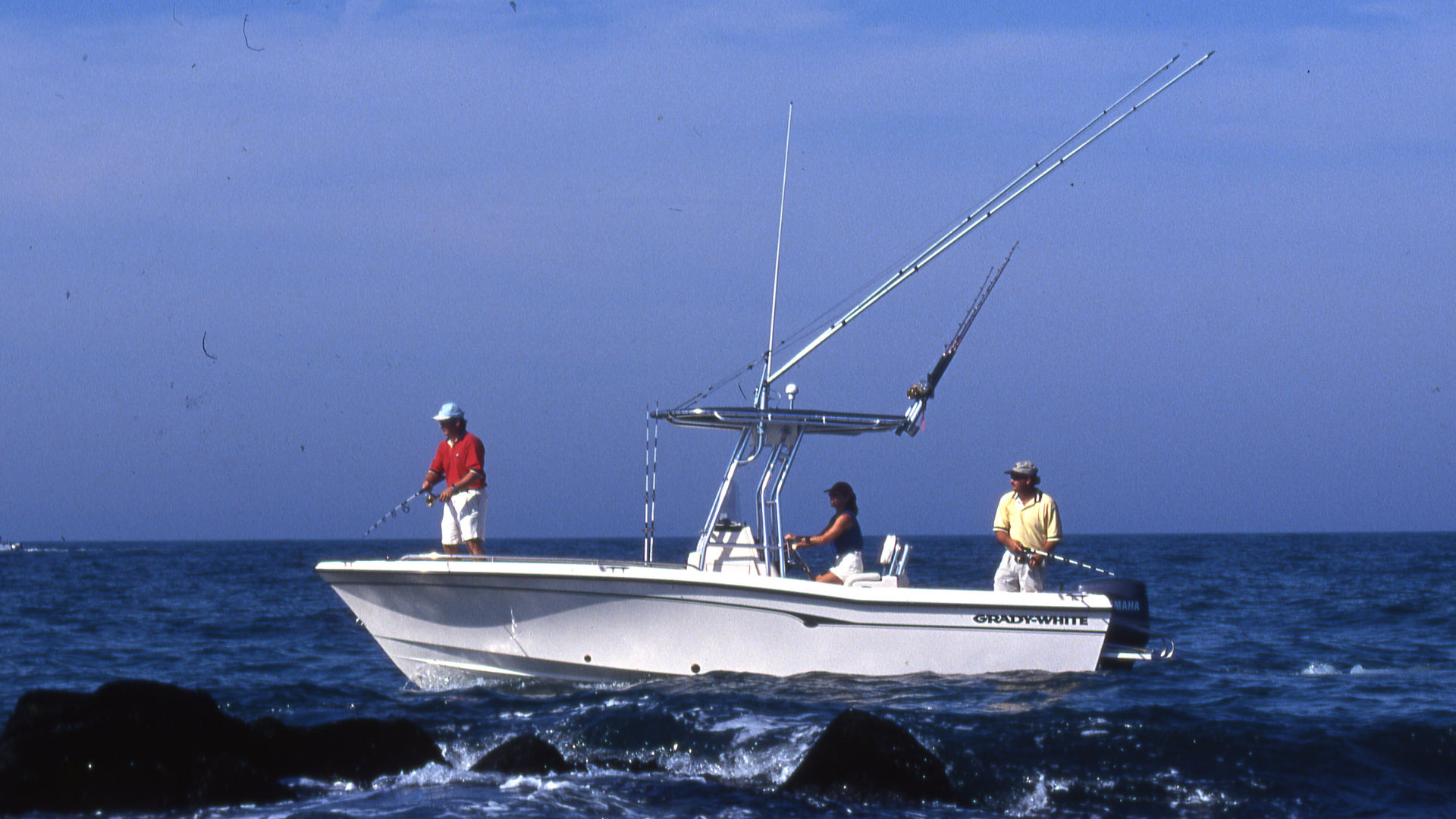
The Boston Harbor is filled with striped bass of various sizes that can be pursued using a range of effective techniques throughout the entire season.
Anglers in the Boston area are enjoying favorable conditions these days. The harbor’s cleanliness is at its highest level in the past century, and fishing for numerous species has notably improved.
Striped bass are the main attraction, and their fishing season kicks off in early May. “The larger bass arrive when the alewives and herring come in, which typically happens around Mother’s Day,” explains Pete Santini, owner of a tackle shop and a local angling expert from Beantown. “After that, the fishing just gets better, especially with the arrival of the mackerel.”
The peak fishing period occurs from the second week of June until mid-July. Santini and other local experts often use live mackerel or menhaden (also known as bunker) when targeting trophy-sized bass. Great locations to catch live mackerel include the G “5” buoy near Graves Light and the “BG” buoy. Other places to find bait include Martins Ledge, Three-and-a-Half-Fathom Ledge, and the G “2” off Nahant’s Bass Point.
With an ample supply of live bait like mackerel or menhaden, you can fish nearly anywhere within the harbor, which offers excellent striper habitats, such as underwater rock piles, drop-offs, and ledges.
A reliable spot for catching larger fish is Broad Sound, located close to the northern entry of the harbor, featuring a series of humps that rise from 70 feet to approximately 40 feet. To fish this region, Santini uses slow-trolling with lead-core line. He threads the bait sideways through its nostrils on a 3/0 3X-strong treble hook attached to a 5-foot length of 50-pound-test fluorocarbon leader. He then lets out three or more colors of lead-core line, based on water depth and current strength.
With the bait swimming just above the bottom, Pete sets the reel’s drag to a level that prevents line from slipping off and places the rod in a holder while he trolls at about 2 knots (the slower, the better). When a fish takes the bait and starts pulling line, he waits a full 5 seconds before engaging the drag and allowing the rod to double over.
Broad Sound isn’t the only location to find big bass. Other areas for slow-trolling live baits include the northern tip of Long Island, the “Narrows” between Lovells and Gallops Islands, the stretch from Winthrop Head past the Five Sisters breakwall to Cherry Island Bar, and the waters off Point Allerton in Hull. These shallower spots—ranging from 8 to 30 feet—require less weight or lead-core line to position the bait where the fish are concentrated.
The tip of Long Island Pier, the rockeries around Spectacle Island and Peddocks Island, the rocky bar off Nixes Mate, Faun Bar, and areas near the Fore River Bridge in Quincy are also effective for both trollers and anglers casting live baits around the rocks while drifting. For the latter method, suspending the bait from a balloon can help keep it above weeds and rocks.
If you prefer light tackle, casting plugs and large flies into rocky areas with depths of 5 to 15 feet can yield fish, particularly during early-morning rising tides. Effective lures include soft plastics like the Slug-Go, Hogy, Savage Manic Prey in blue or green mackerel, the Storm Wildeye Swim Shad, and the Rebel Pop-R.
Another highly effective strategy, although not commonly used by most striper anglers, is to troll a large wooden swimming plug such as a Danny Deep Diver or Soldati Giant Pike at night over the reefs and ledges in water depths of 12 to 20 feet.
This approach requires a good understanding of the harbor’s bottom and the use of 50-pound conventional tackle, as many fish caught this way weigh between 30 and over 50 pounds. As spring transitions into mid-summer, striper action may slow down temporarily, but reliable action can be found with Boston’s tough bluefish.
Locating them typically involves heading to the Graves or the RW “B” Buoy and trolling a mackerel-patterned Rapala X-Rap on three colors of lead-core line or 150 feet of wire line. It’s essential to use a wire leader ahead of the plug to avoid cut-offs. After battling with these six- to 15-pound fighters, you might just find yourself momentarily forgetting all about the bass!